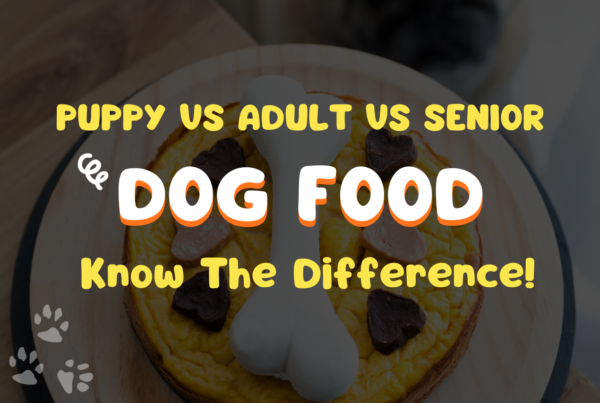
Essential Strategies for Reducing The Risk Of Bloat In Large Breed Dogs: Understanding Causes, Prevention, and Immediate Response
Large breed dogs are more than just pets; they’re cherished members of our families. Their wagging tails, playful barks, and unconditional love bring joy and warmth to our lives. However, with their impressive size comes a potential health concern—bloat, formally known as Gastric Dilatation Volvulus (GDV).
This condition, where a dog’s stomach fills with gas and twists on itself, can be serious and even life-threatening, especially for larger breeds. As responsible pet owners, it’s crucial to understand the factors contributing to the risk of bloat and take proactive steps to ensure the well-being of our furry companions.
Understanding Canine Bloat: A Serious Health Threat
Bloat is a serious condition that we, as dog lovers, need to be aware of, especially when it comes to large breeds. These dogs often have deep chests, a trait that makes them more prone to bloat.
In this condition, the dog’s stomach fills with gas and can swell dramatically. In more severe instances, the stomach may even twist (a situation known as volvulus), cutting off blood flow to vital organs and putting the dog’s life in jeopardy.
Bloat can strike unexpectedly, making it crucial to recognize the signs early. Symptoms to watch out for include a swollen belly, attempts to vomit without bringing anything up, pacing, and apparent difficulty in breathing. Should you notice these signs, it’s imperative to get your dog to a vet immediately. Early detection and treatment can be life-saving.
Mealtime Management: Small Changes, Big Impact
Managing mealtime is a crucial aspect of preventing bloat in large breed dogs. Simple adjustments to feeding routines can make a significant difference.
Feeding Frequency and Portion Control: Instead of one large meal, consider feeding your large breed dog multiple small meals throughout the day. This helps prevent the stomach from becoming overly distended, reducing the risk of gas accumulation.
Slow Feeding Solutions: Introduce slow feeder bowls or puzzle feeders. These tools not only make mealtime more mentally stimulating but also slow down the eating pace, minimizing the chances of excessive air intake.
Consider discussing your dog’s specific feeding requirements with your veterinarian. Factors such as age, weight, and activity level can influence the ideal feeding routine.
Selecting The Best Diet: Preventing Bloat Through Nutrition
The type of food you choose for your large breed dog can play a significant role in preventing bloat.
Avoiding Grain-Free Diets: Recent research has raised some red flags about grain-free diets. These studies suggest a possible connection between such diets and a higher risk of dilated cardiomyopathy (DCM), a heart condition that could be a factor in bloat. It’s important to have a chat with your vet to figure out the best feeding plan for your large breed buddy.
Nutrient Composition: Opt for dog food with an appropriate balance of protein, fat, and carbohydrates. Lean protein sources, moderate fat levels, and complex carbohydrates contribute to a well-rounded and digestible diet.
Moisture Content: Consider incorporating moist or wet food into your dog’s diet. This not only adds variety to their meals but also increases overall moisture intake, aiding in digestion.
Look for dog food formulated specifically for large breeds, as these often consider their unique nutritional needs. Ingredients like glucosamine and chondroitin for joint health can be beneficial.
Hydration Matters: Keeping Your Dog Well-Hydrated
Proper hydration is crucial for overall health and can play a role in preventing bloat.
Access to Fresh Water: Ensure your dog has constant access to fresh water. Staying hydrated helps maintain the balance of fluids in the body and supports overall digestive health.
Moistening Dry Food: If your dog prefers dry kibble, consider moistening it with water before serving. This can make the food easier to chew and swallow, reducing the risk of gulping air during meals.
Encourage water intake, especially after exercise or on warm days. Dehydration can accelerate the risk of bloat.
Managing Exercise And Activity Levels: Striking The Right Balance
Regular exercise is essential for large breed dogs, but managing activity levels around mealtimes is crucial.
Preventing Vigorous Exercise After Meals: It’s wise to hold off on any heavy exercise right after your dog has had a meal. Taking this step helps reduce the risk of stomach twisting, which can happen when they’re too active with a full belly.
Encouraging Low-Impact Activities: Consider low-impact exercises, such as gentle walks, to promote digestion without the risk of excessive strain on the stomach. Balancing exercise is key, as both sedentary behavior and excessive activity can contribute to digestive issues. Tailor your dog’s exercise routine to their individual needs.
Creating A Stress-Free Environment: A Calm Haven For Your Dog
Stress and anxiety can contribute to various health issues in dogs, including digestive problems that may increase the risk of bloat.
Peaceful Mealtime Atmosphere: Create a calm and quiet environment during mealtime. Minimize stressors, such as loud noises or the presence of unfamiliar pets, to allow your dog to eat without anxiety.
Gradual Introductions to New Environments: If your large breed dog is sensitive to changes, introduce them gradually to new environments and routines. Sudden disruptions can lead to stress, potentially impacting their digestive health.
Provide a safe and quiet space where your dog can retreat, especially during mealtimes. Familiarity and routine can alleviate stress.
Routine Veterinary Check-Ups: The Cornerstone Of Preventive Care
Regular veterinary check-ups are essential for preventing and addressing health issues in dogs, including the risk of bloat.
Discussion of Bloat Risk Factors: Engage in open communication with your veterinarian about the specific risk factors associated with bloat in large breed dogs. This can include breed predispositions, diet considerations, and overall health assessments.
Exploration of Preventive Measures: Work with your veterinarian to develop a personalized preventive care plan. This may include dietary recommendations, exercise guidelines, and strategies to manage stress.
Routine check-ups should include a thorough examination of your dog’s abdomen and discussions about their overall well-being. Early detection of potential issues is crucial.
Additional Tips To Ensure Comprehensive Care
Elevated Feeding Stations: Consider using elevated feeding stations for your large breed dog. Raised bowls can help reduce the amount of air ingested during meals, potentially lowering the risk of bloat.
Rotational Feeding: Incorporate a variety of protein sources and rotate your dog’s diet regularly. This not only provides a more balanced nutritional profile but also promotes a healthy digestive system.
Regular Dental Care: Dental health is linked to overall well-being. Implement a regular dental care routine to prevent dental issues that may lead to altered eating habits, minimizing the risk of bloat.
Monitored Outdoor Exploration: While outdoor activities are essential, monitor your dog during outdoor exploration to prevent them from ingesting foreign objects, which could contribute to digestive issues.
Avoiding Rapid Water Consumption: Discourage rapid water consumption immediately after meals. This can help prevent the stomach from expanding too quickly and reduce the risk of bloat.
Breed-Specific Exercise Programs: Tailor your dog’s exercise routine to their specific breed characteristics. Different large breeds have varying energy levels and exercise needs, so consult your vet for a suitable program.
Temperature Considerations: Be mindful of the temperature when exercising your large breed dog. Hot weather can increase the risk of dehydration, which, when combined with a large meal, may contribute to bloat.
Monitoring Body Weight: Maintain a healthy body weight for your large breed dog. Obesity can be a contributing factor to bloat, so work with your veterinarian to establish an appropriate weight management plan.
Breed-Specific Health Screenings: Some large breeds may have predispositions to certain health conditions. Regular health screenings, especially for breeds prone to bloat, can aid in early detection and preventive measures.
Prebiotics and Probiotics: Consider incorporating prebiotics and probiotics into your dog’s diet. These supplements can promote a healthy gut microbiome, potentially reducing the risk of digestive issues.
Emergency Preparedness: Familiarize yourself with the nearest emergency veterinary clinics. Quick access to medical care is crucial in case of a suspected bloat episode.
Remember, the goal is to create a holistic approach to your large breed dog’s well-being, considering various aspects of their lifestyle and health. Regular observation, adaptation of routines, and a proactive mindset will contribute to a happy and healthy life for your furry companion.
Conclusion
Caring for a large breed dog is a journey filled with love, joy, and responsibility. By understanding the factors that contribute to the risk of bloat and taking proactive measures, you can provide your furry friend with the best chance at a healthy and happy life.
Remember, you’re not just a caretaker; you’re a guardian of their well-being. Through thoughtful meal planning, hydration management, stress reduction, and regular veterinary care, you’re actively contributing to your large breed dog’s overall health and reducing the specter of bloat.
So, take on this responsibility with love and care. Your large breed companion deserves a life filled with wagging tails, happy barks, and the knowledge that you’re always there for them. The journey may be long, but with your dedication, it will be one of shared moments, mutual understanding, and a bond that transcends words.






